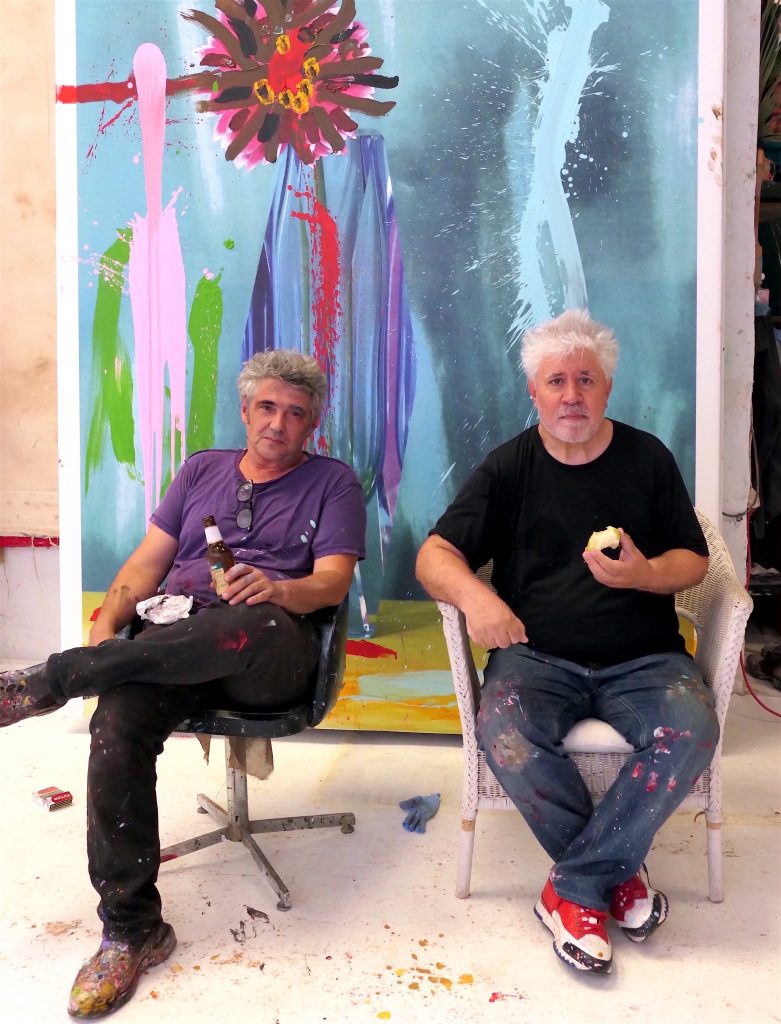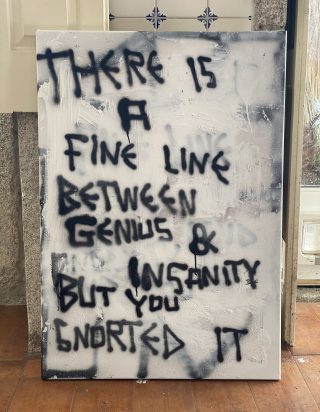
Jorge Galindo and Pedro Almodóvar – Paintings in Collaboration – SNBA, Lisboa
The National Society of Fine Arts in Lisboa and Galeria Fernando Santos have the honor to invite you to the opening of the exhibition Jorge Galindo and Pedro Almodóvar – Paintings in Collaboration, on June 24 at 18:00 at the Salão of the Sociedade Nacional de Belas Artes.
The exhibition will be open until the 16th of July 2022.

It was Voltaire, the 18th century radical thinker, whose work would contribute so much to European modernity, who wrote somewhere that good spirits meet. This beautiful axiom, so full of exemplary truth, has, with time, become a popular saying.
It is therefore not surprising, with this elementary principle in mind, that inevitably Almodóvar and Galindo would meet.
Almodóvar, as Galindo collector, in the beginning, then looking for images for one of his films. Galindo, from the following generation, his admirer, and seeing in this possibility the opportunity to express his genuine admiration, since his generation was culturally born from the new society shown first by Almodóvar.
The story that followed is already known. The meeting would take place with ease, and quickly a common project would be born from that meeting. Why not expand Pedro Almodóvar’s photographs to a monumental scale, almost of the screen of a small neighbourhood cinema, so that, starting from this new medium, intervene them with painting?
And the result is, in many ways, remarkable, for both of them, because if Galindo tries here to measure himself from a previous image — which he had already done in his beginnings, when painting on posters pulled from the street, wishing picabianally integrate these images into his own images, as in an arena — in this case everything operates as if on a screen, even if photographic, coming from the filmmaker/photographer’s frameworks.
And, in the case of Pedro Almodóvar, what it’s all about is, after all, rediscovering the possibility of suddenly seeing his canvases saturated with the violent invasion, in a sovereign invasive way, of that violence of painting that he himself dreamed of, having made a cinema entirely populated with, and built on, a desire for painting.
Excerpt of the text “The Pain and the Glory” by Bernardo Pinto de Almeida

